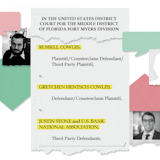Minnesota hunters dodged a bullet when the U.S. Fish and Wildlife Service unexpectedly opened about 200,000 acres of federal Waterfowl Production Areas (WPA) in the state on the eve of Saturday's pheasant opener.
The announcement came Friday afternoon and affects about 685,000 acres of wildlife lands nationwide, primarily in the Midwest and Great Plains.
The properties are almost entirely purchased with federal duck stamp funds and managed by the Interior Department. Along with national parks and monuments, WPAs had been closed during the government shutdown.
Fish and Wildlife Service spokesman Chuck Traxler, stationed in the Twin Cities, said his agency determined no expenses would be incurred by opening the WPAs, making the action legal.
"No active management is occurring on the lands," Traxler said, and the service's 10 enforcement agents assigned to the state have remained on duty during the shutdown, requiring no additional costs.
"I think as things became a little clearer during the shutdown, we understood better what we could do and what we couldn't do," Traxler said. "This decision came out of Washington, and my understanding is they're going to look at other things to see if anything else can be opened if the shutdown continues."
Had the WPAs remained closed Saturday, tens of thousands of pheasant hunters would have had to relocate onto state wildlife management areas, which typically are already crowded on the season's first day.
About 80,000 Minnesotans are expected to hunt pheasants in the state this year, along with a similar number of duck hunters. During the fall, most will hunt WPAs.



